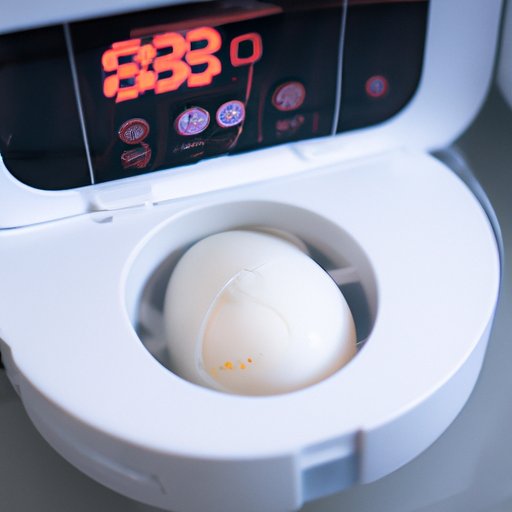How to Perfectly Poach an Egg:
Traditional Method
If you’re a fan of classic techniques, poaching eggs the traditional way is your best bet. Start by filling a pot with water and bring it to a boil. You can add a little bit of vinegar to the water (one tablespoon of vinegar per quart of water) to help keep the egg whites coagulated. Once the water is boiled, reduce heat to a gentle simmer. Break an egg into a small cup or ramekin, just make sure the yolk is intact when you transfer it to the water. Quickly, drop the egg into the simmering water and use a spoon to gently shape the white around the yolks. Cook the egg for around 2-4 minutes, depending on how soft you like your yolk. Remove the egg with a slotted spoon and lay it onto a paper towel to drain excess water. Serve immediately.
When using the traditional method, it is vital to have fresh eggs. Older eggs tend to be more liquidy and thin, making them difficult to hold together when poached. Also, the age of an egg determines how easy it is to peel them later on. Additionally, the egg doesn’t have to be super cold because it won’t crack this way. Lastly, if the egg white part becomes separated in the water, it is acceptable to cut off the edges with scissors.
Microwave Method
The microwave method is convenient, fast, and a great alternative to poaching eggs with the traditional method. To begin, fill a microwave-safe cup with half a cup of hot water and add around a tablespoon of vinegar. Crack an egg into the cup and cover the entire cup using a small plate or lid. Microwave it for about 45 seconds. Once cooked as desired, quickly remove the egg from the water with a slotted spoon. Serve immediately.
When using the microwave method, use caution because the dish will become hot. If you find that the egg isn’t cooked as desired, return it to the microwave and cook it for another 5-10 seconds, repeating until preferred softness is achieved. It’s critical to ensure that the cup is microwave-safe and that no foil or metal touches the egg or makes contact with the microwave.
Sous Vide Method
Sous-vide techniques are becoming increasingly popular in the culinary world because it allows for a perfect degree of precision when it comes to cooking. The sous-vide poached egg method requires the lowest level of water temperature, which is the most crucial aspect of this technique. The egg whites and yolks cook evenly and at consistent temperatures. However, Sous-vide cooking requires special types of equipment such as a large pot, sous vide precise cooker, and a vacuum-sealed bag. Simply place an egg in a vacuum-sealed bag under the Sous vide cooker’s water, with the temperature set to 140-145°F. Cook it for around 45 minutes, then remove it from the bag and serve immediately.
When using the Sous-vide method, double-check the temperature of the water to ensure that the temperature requirements are being met. Cooking time using the sous-vide method may vary because cooking eggs from this technique take more time than poaching them in the traditional method. Also, avoid aggressive movement because the egg yolk might accidentally break during cooking.
Whirlpool Method
The whirlpool method, also known as vortex cooking, is a technique that involves creating a vortex in the water while poaching the egg. It involves stirring boiling water, creating a gentle current, and stirring the water until it resembles a whirlpool. Next, crack an egg into a small cup or ramekin cup, then drop it in the center of the vortex. Cook for 2-4 minutes, depending on how soft or hard you want egg yolk to be, then remove the egg with a slotted spoon and drain excess water on a paper towel. Serve immediately.
When using a whirlpool method, ensure you create a calm bubble inside the water to catch the egg yolk. Stir the pot, and create an egg-sized well by keeping whirling the water. Lastly, ensure the water vortex is at the correct temperature, which should be precisely below boiling point.
Egg Cooker Method
Using an egg cooker is an excellent option if you prefer your eggs more uniform in texture and shape. To begin, fill egg poacher cups halfway with hot water, then insert them into the egg cooker. Crack an egg into each cup, then turn on the device. After a few minutes, lift the lid, and remove the egg cups using the handles. Remove the eggs from the cup by gently pressing on the bottom, then serve immediately.
The egg cooker method is perfect for beginner cooks or someone who doesn’t have a lot of time in the kitchen. Plus, it is an idyllic method for those who want a consistent, uniformly shaped egg. When using an egg cooker method, always use distilled water and remember to add a little bit of oil to the egg cups before adding eggs to make it easier to remove them later on.
Conclusion
Poached eggs are an excellent way to add a healthy dose of protein to your meals. Whether you’re an advanced cook or a beginner, there are multiple ways to poach eggs. The traditional method requires only a pot of boiling water, while the whirlpool and sous-vide methods require a little more attention to details. Meanwhile, the microwave and egg cooker methods are ideal when timed right, and perfect consistency is preferred. The key to perfect poached eggs is to experiment with all the techniques mentioned in this article, and determine which one works best for your personal needs.
